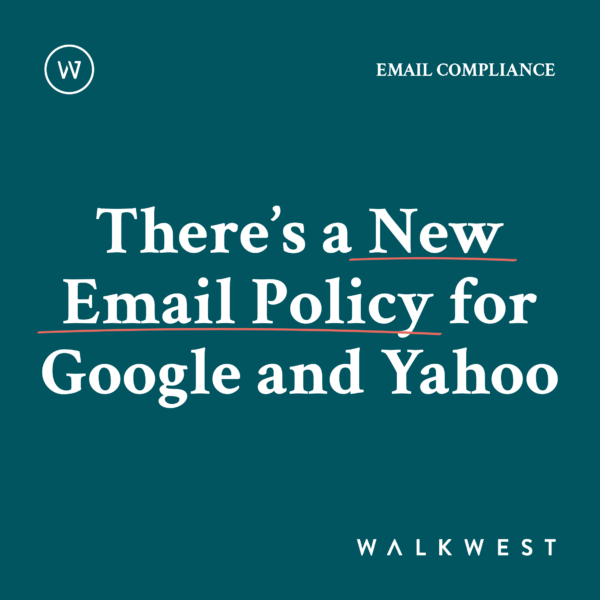There are some new requirements for sending emails on Google and Yahoo.
Starting February 2024, Google and Yahoo are implementing new requirements for accounts that regularly send out large volumes of email. These requirements were designed as part of an ongoing effort to reduce spam, phishing, spoofing, and other dishonest email practices.
Moving forward, Google and Yahoo will require senders to go through an authentication process on their sending domain to avoid their emails bouncing.
What Does This Mean?
Trust us when we say; this is a good thing!
Right now, consumers get way too many emails every day. The more emails someone has to sort through, the less likely they are to open each one.
This new authentication process will help your messages stand out from the sea of daily emails, as others will start going directly to spam. Think of it as a way to verify that you are a trustworthy, legitimate business and that the emails you send out are safe and worth reading.
Who Will This Impact?
This will impact anyone who sends over 5,000 emails in a 24-hour period. If you have a large contact list and regularly send out product updates, newsletters, offers, and other content, this applies to you.
What Do I Need To Do?
1. Send from a domain you own
- Try to avoid sending from an email that ends with @gmail.com or @yahoo.com. Update the domain to reflect your company name like abarbari@walkwest.com.
2. Set up DKIM and SPF
- DKIM (DomainKeys Identified Mail) and SPF (Sender Policy Framework) are two authentication processes used to prevent spammers from impersonating you. Services like Google and Yahoo use them to help you verify your business. Want a more detailed explanation of how they work? This quick video does a great job explaining each.
3. Set up your DMARC records
- DMARC (Domain-based Message Authentication, Reporting, and Conformance) is another email validation system that prevents spammers from impersonating you.
Need to set up your email authentication for a separate email provider? We have a few links here to help you out:
Don’t End Up in the Spam Folder
Your emails are important, so make sure they land in the inbox.
It’s hard enough to get valuable eyes on the content you send out — don’t let your visibility disappear completely because of authentication issues. Make sure your sending domain is a private one (preferably the same as your company) and go through the new authentication processes.
When done correctly, email is an invaluable tool for driving traffic to your website. Unsatisfied with your current email engagement strategy? We’re here to help. Reach out to us today to learn more about email authentication, crafting the right message for your emails, and how to get eyes on your message.

